#Nuwss
Explore tagged Tumblr posts
Text
Offering violence and experiencing violence from police and bystanders, members began to leave the WSPU and by 1914 it was said to have only 5,000 members, compared to the peaceful NUWSS, which reported 50,000.
"Normal Women: 900 Years of Making History" - Philippa Gregory
#book quote#normal women#philippa gregory#nonfiction#violence#police#bystanders#police violence#wspu#women's social and political union#nuwss#national union of women's suffrage societies#membership
0 notes
Text
Millicent Garrett Fawcett (1847–1929) -Cheffe de file de la "Non-Violent" (NUWSS)des suffragistes anglaises
Millicent Garrett Fawcett (1847–1929) « Je ne peux pas dire que je suis devenue suffragette », écrira-t-elle plus tard. « Je l’ai toujours été, depuis que j’ai eu l’âge de penser aux principes du gouvernement représentatif » Millicent Fawcett est une suffragiste et une militante majeure pour l’égalité des droits pour les femmes. De 1890 à 1919, elle est à la tête de la plus grande organisation…

View On WordPress
0 notes
Text

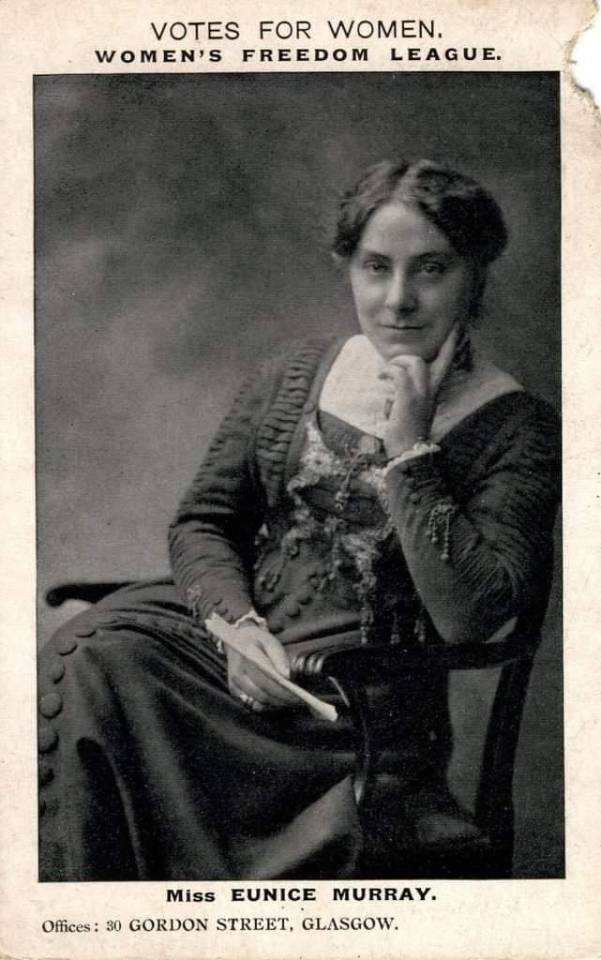

Eunice Guthrie Murray was born on 21st January 1878 in Cardross.
Eunice Murray was the daughter of a well-known Glasgow lawyer, Dr David Murray and Frances Porter Murray, Murray was one of the founders of the Glasgow Ladies Higher Education Society in 1876, both her parents were both supporters of the women's movement, her mother, Frances was born in New York, and raised in Scotland, was a suffragette. Frances’s parents both of whom were active abolitionists, emigrated to Glasgow in 1844.
Murray attended the progressive St Leonard School in St Andrews, where she became involved in philanthropic activities. She was active in the local branch of the League of Pity, volunteered regularly at a local settlement, and was an advocate for temperance. On 9th November 1896 she recorded reading about the formation of the National Union of Women’s Suffrage Societies, commenting
‘I should like to join such a society for the question of the emancipation of my sex is a stirring one and leads to vital matters’.
Given her background it is hardly surprising that along with her mother and her sister, Sylvia Murray, she joined the Women’s Freedom League. The WFL had a strong presence in Scotland, and from 1909 onwards Murray was the secretary for ‘scattered members’—all those who did not live in Edinburgh, Glasgow, or Dundee. Eunice was one of the three Scottish members on the WFL’s national executive committee and in 1913 was described as president for Scotland of the WFL.
The Women’s Freedom League was a non-violent militant group most famous for first chaining themselves to railings and leading the 1911 Census boycott. Inspired after attended the International Women’s Suffrage Alliance in Budapest in 1913, Eunice Murray was arrested for obstruction when she tried to address a meeting near 10 Downing Street on women’s suffrage.
Unlike the Pankhursts’ Women’s Social and Political Union (WSPU) and the National Union of Women’s Suffrage Societies (NUWSS), the WFL continued to campaign for the women’s suffrage throughout the First World War. Murray was an active feminist who had published numerous leaflets on women and their position in society such as The Illogical Woman. Like many feminists, Murray argued for the vote based on the unique roles of men and women. She observed, ‘We have always held, and hold now, that it is because men and women are so different, and not because they are so alike, that we require the vote.
In 1918, women in Britain finally won their right to vote and stand in general elections, if they were over 30 and met minimum property qualifications, and Eunice was quick to take advantage of this major breakthrough and stood as a candidate in Glasgow, Bridgeton in the 1918 election, the only Scottish woman in the first election open to women in 1918, she was unsuccessful, coming third. The results being Coalition Liberal Alexander MacCallum Scott 10,887, Labour James Maxton 7,860 and Independent Eunice Murray 991.
The election was held in the midst of the Spanish Flu epidemic with 327 deaths in the Glasgow that week, compared to 386 the previous week. Schools and docks were closed when half a million Glaswegians took to the polls, of which just over one-third were newly enfranchised women. In response to a claim that all women candidates were pacifists she wrote to the Spectator on 23rd November 1918, ‘I believe that the war we have just fought and won was a righteous one, and that it was the duty of newly enfranchised women to support the country’.
The election saw the defeat of the Asquith Liberals and the landslide of the Coalition Liberals. Murray was not deterred by her defeat and went to on to have an active political life. Elected as councillor in 1923 to Dunbartonshire Council, Murray was also the founder and President of the Scottish Women’s Rural Institute in the area.
Eunice Murray died on 26th March 1960 having led an active and inspirational life and today we remember her as the first women to break the barrier in Scotland to stand as an MP.
12 notes
·
View notes
Text

'Carnation, Lily, Rose' - suffrage banner honouring Mary Moser, 1908 This banner was used in Jun 1908 National Union of Women's Suffrage Societies (NUWSS) Procession Mary Moser and Angelica Kaufmann were among the founding members of the Royal Academy of Arts (RA). It may come as a surprise that when the Royal Academy was founded in 1768, there were two women among the 34 original Members – fairly progressive by eighteenth-century standards. Angelica Kauffmann (1741–1807) and Mary Moser (1744–1819) were both painters, Moser specialising in portrait and floral paintings and Kauffmann focusing on historical and allegorical subjects. And after Mary's death in 1819, it was over a century before a female Academician was elected.
#dianthus#carnation#female power#women in art#suffragists#emancipation#Mary Moser#Angelica Kauffmann#woman in art#18th century
7 notes
·
View notes
Text
Annie Swynnerton
Until 24th September 2023, Tate Britain is devoting one room to the works of Annie Swynnerton (1844-1933), a trailblazing painter and campaigner for women’s rights. Best known for her portraits and symbolist paintings, Swynnerton developed a distinct style and became the first female member of the Royal Academy since its founding in 1768. Annie Louisa née Robinson was born in Manchester on 26th…

View On WordPress
#annie swynnerton#art#Millicent Fawcett#NUWSS#painting#portraits#Royal Academy#suffragists#tate britain#women&039;s suffrage
1 note
·
View note
Text
Events 2.9 (before 1950)
474 – Zeno is crowned as co-emperor of the Byzantine Empire. 1003 – Boleslaus III is restored to authority with armed support from Bolesław I the Brave of Poland. 1098 – A First Crusade army led by Bohemond of Taranto wins a major battle against the Seljuq emir Ridwan of Aleppo during the siege of Antioch. 1539 – The first recorded race is held on Chester Racecourse, known as the Roodee. 1555 – Bishop of Gloucester John Hooper is burned at the stake. 1621 – Gregory XV becomes Pope, the last Pope elected by acclamation. 1654 – The Capture of Fort Rocher takes place during the Anglo-Spanish War. 1775 – American Revolutionary War: The British Parliament declares Massachusetts in rebellion. 1778 – Rhode Island becomes the fourth US state to ratify the Articles of Confederation. 1822 – Haiti attacks the newly established Dominican Republic on the other side of the island of Hispaniola. 1825 – After no candidate receives a majority of electoral votes in the US presidential election of 1824, the United States House of Representatives elects John Quincy Adams as sixth President of the United States in a contingent election. 1849 – The new Roman Republic is declared. 1861 – American Civil War: Jefferson Davis is elected the Provisional President of the Confederate States of America by the Provisional Confederate Congress at Montgomery, Alabama 1870 – US president Ulysses S. Grant signs a joint resolution of Congress establishing the U.S. Weather Bureau. 1889 – US president Grover Cleveland signs a bill elevating the United States Department of Agriculture to a Cabinet-level agency. 1893 – Verdi's last opera, Falstaff premieres at La Scala, Milan. 1895 – William G. Morgan creates a game called Mintonette, which soon comes to be referred to as volleyball. 1900 – The Davis Cup competition is established. 1904 – Russo-Japanese War: Battle of Port Arthur concludes. 1907 – The Mud March is the first large procession organised by the National Union of Women's Suffrage Societies (NUWSS). 1913 – A group of meteors is visible across much of the eastern seaboard of the Americas, leading astronomers to conclude the source had been a small, short-lived natural satellite of the Earth. 1920 – Under the terms of the Svalbard Treaty, international diplomacy recognizes Norwegian sovereignty over Arctic archipelago Svalbard, and designates it as demilitarized. 1922 – Brazil becomes a member of the Berne Convention copyright treaty. 1929 – Members of the Việt Nam Quốc Dân Đảng assassinate the labor recruiter Bazin, prompting a crackdown by French colonial authorities. 1932 – Prohibition law is abolished in Finland after a national referendum, where 70% voted for a repeal of the law. 1934 – The Balkan Entente is formed between Greece, Romania, Yugoslavia, and Turkey. 1941 – World War II: Bombing of Genoa: The Cathedral of San Lorenzo in Genoa, Italy, is struck by a bomb which fails to detonate. 1942 – Year-round Daylight saving time (aka War Time) is reinstated in the United States as a wartime measure to help conserve energy resources. 1943 – World War II: Pacific War: Allied authorities declare Guadalcanal secure after Imperial Japan evacuates its remaining forces from the island, ending the Battle of Guadalcanal. 1945 – World War II: Battle of the Atlantic: HMS Venturer sinks U-864 off the coast of Fedje, Norway, in a rare instance of submarine-to-submarine combat. 1945 – World War II: A force of Allied aircraft unsuccessfully attack a German destroyer in Førdefjorden, Norway.
0 notes
Text
Donne del 900: chi furono le suffragette
Le donne del 900 hanno duramente lottato per conquistare diritti fondamentali. Grazie alle loro battaglie, per esempio, le donne di oggi possono esprimere il loro voto. Pur essendo il movimento britannico per il suffragio femminile il più noto, il movimento per il voto alle donne nacque in diverse parti del mondo, segno che i tempi erano ormai maturi. Le suffragette britanniche, furono chiamate così le attiviste per il voto alle donne, furono da ispirazione per le donne di tutto il mondo. Dove nacque il movimento per il voto alle donne? Il movimento per il voto alle donne ebbe origine in varie parti del mondo nel corso del XIX e del XX secolo. Le prime organizzazioni e attivisti che si battevano per il diritto di voto delle donne emersero in diverse nazioni contemporaneamente, spesso indipendentemente gli uni dagli altri. Le suffragette britanniche, in particolare, furono estremamente influenti nel promuovere il movimento per il voto delle donne nel Regno Unito e nel fornire un modello di attivismo per altri paesi. Nel Regno Unito, il movimento per il voto delle donne guadagnò slancio nel tardo XIX secolo e all'inizio del XX secolo. Organizzazioni come la National Union of Women's Suffrage Societies (NUWSS), fondata nel 1897 da Millicent Fawcett, promossero il suffragio femminile attraverso metodi pacifici come petizioni, discorsi pubblici e lobbismo. Tuttavia, fu il movimento più radicale delle suffragette che attirò maggiormente l'attenzione. La Women's Social and Political Union (WSPU), fondata da Emmeline Pankhurst nel 1903, adottò tattiche più aggressive e militanti per ottenere il diritto al voto delle donne. Le suffragette britanniche fecero notizia con le loro azioni di protesta, come scioperi della fame, manifestazioni, vandalismo e incendi dolosi. Al di fuori del Regno Unito, movimenti per il suffragio femminile emersero in molti altri paesi. Ad esempio, negli Stati Uniti, Nuova Zelanda, Canada, Australia e diversi Paesi europei. Chi erano le suffragette? Le suffragette erano membri di un movimento politico e sociale che lottava per il diritto al voto delle donne. Il termine "suffragette" è spesso associato alle donne che fecero parte del movimento britannico per il suffragio femminile all'inizio del XX secolo. Il movimento era guidato principalmente dalla Women's Social and Political Union (WSPU). Queste donne adottarono tattiche di disobbedienza civile e azioni di protesta per attirare l'attenzione sulle loro richieste di voto: dagli scioperi della fame alle manifestazioni pubbliche, atti di vandalismo, incendi dolosi. Le suffragette britanniche sono state fondamentali per ispirare movimenti per il suffragio femminile in altre parti del mondo, contribuendo a promuovere il riconoscimento dei diritti politici delle donne a livello globale. Donne del 900: quando hanno votato per la prima volta? La prima volta che le donne hanno votato varia da Paese a Paese. Ecco alcune date significative: - 1893 Nuova Zelanda: fu il primo paese al mondo a concedere alle donne il diritto di voto su base nazionale. - 1902 Australia: a seguire l'Australia dove, però, ci furono alcune differenze tra i diversi stati. - 1906 Finlandia: fu il primo paese europeo a concedere alle donne il diritto di voto su base nazionale. - 1913 Norvegia: anche le donne norvegesi ottennero il diritto di voto. - 1918 Regno Unito: il Representation of the People Act del 1918 concesse il diritto di voto alle donne sopra i 30 anni che soddisfacevano determinati requisiti di proprietà. Successivamente, nel 1928, il Atto di Rappresentanza del Popolo (Equal Franchise) estese il diritto di voto a tutte le donne di età superiore ai 21 anni. - 1920 Stati Uniti: l'approccio al diritto di voto delle donne fu graduale. Il 26º emendamento della Costituzione degli Stati Uniti, ratificato nel 1920, garantì il diritto di voto alle donne a livello federale. - 1945 Italia: un decreto legislativo luogotenenziale sancì il diritto di voto alle donne dai 21 anni. In copertina foto di WOKANDAPIX da Pixabay Read the full article
0 notes
Photo

Emily Davison gave her life in front of the King’s horse in my hometown for me to have my voice heard. As a woman it’s important to me to exercise my right to vote at every opportunity. I’ve voted in the European elections. Have you? #suffrage #suffragettes #votesforwomen #nuwss #epsom #emilydavison #europeanelections #vote https://www.instagram.com/p/BxzWxJHnN8W/?igshid=15faokft5427z
0 notes
Photo

0 notes
Text

my little pin corner !
a moon, from ems, because she misses me the most at night time when we’re not together and because I’m the moon to her sun
a badge from the BEST brunch place I’ve been to, the breakfast club in brighton
a votes for women pin - doesn’t really need explaining
and my favourite, a cat reading to kill a mockingbird - my favourite animal and my favourite book !
#georgia talks#i am a very specific type of person and i think my bag shows that lol#i did just spend two days in archives looking at WSPU and NUWSS papers#as well as working class womens magazines#and i saw bombshell in the cinema#im in extra feminist mode rn
1 note
·
View note
Text
I'm using my mirror light as a lamp for my studying

#I'm studying the nuwss and wspu currently#It's a little boring but I appreciate what these women did#Me#Selfie#Face
17 notes
·
View notes
Text
On This Day In History
January 9th, 1907: The Mud March is the first large procession organized by the National Union of Women's Suffrage Societies (NUWSS).
#history#world history#20th century#badass women#mud march#english history#british history#feminist history#women's suffrage#suffrage movement#suffragists
5 notes
·
View notes
Text


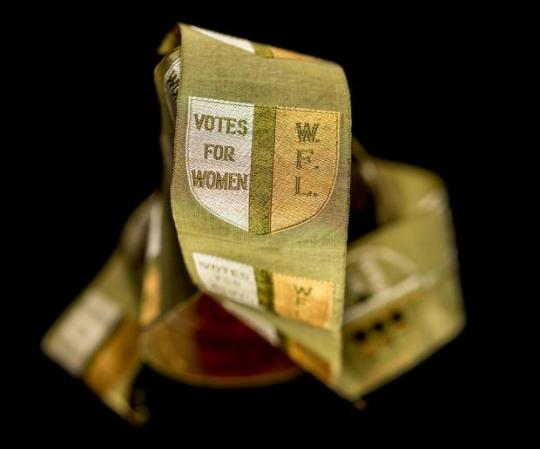
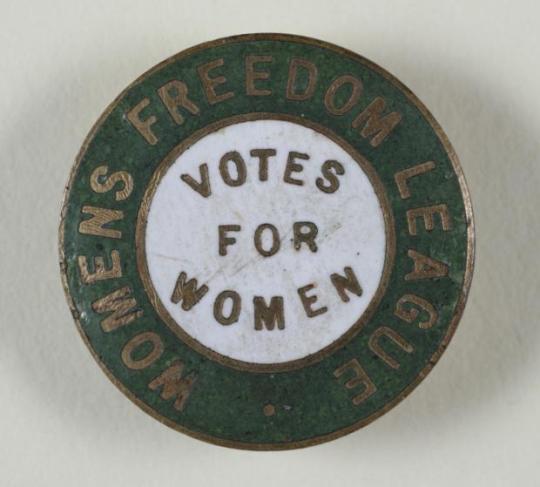



Eunice Guthrie Murray was born on 21st January 1878 in Cardross.
Eunice Murray was the daughter of a well-known Glasgow lawyer, Dr David Murray and Frances Porter Murray, Murray was one of the founders of the Glasgow Ladies Higher Education Society in 1876, both her parents were both supporters of the women’s movement, her mother, Frances was born in New York, and raised in Scotland, was a suffragette. Frances’s parents both of whom were active abolitionists, emigrated to Glasgow in 1844.
Murray attended the progressive St Leonard School in St Andrews, where she became involved in philanthropic activities. She was active in the local branch of the League of Pity, volunteered regularly at a local settlement, and was an advocate for temperance. On 9th November 1896 she recorded reading about the formation of the National Union of Women’s Suffrage Societies, commenting
‘I should like to join such a society for the question of the emancipation of my sex is a stirring one and leads to vital matters’.
Given her background it is hardly surprising that along with her mother and her sister, Sylvia Murray, she joined the Women’s Freedom League. The WFL had a strong presence in Scotland, and from 1909 onwards Murray was the secretary for ‘scattered members’—all those who did not live in Edinburgh, Glasgow, or Dundee. Eunice was one of the three Scottish members on the WFL’s national executive committee and in 1913 was described as president for Scotland of the WFL.
The Women’s Freedom League was a non-violent militant group most famous for first chaining themselves to railings and leading the 1911 Census boycott. Inspired after attended the International Women’s Suffrage Alliance in Budapest in 1913, Eunice Murray was arrested for obstruction when she tried to address a meeting near 10 Downing Street on women’s suffrage.
Unlike the Pankhursts’ Women’s Social and Political Union (WSPU) and the National Union of Women’s Suffrage Societies (NUWSS), the WFL continued to campaign for the women’s suffrage throughout the First World War. Murray was an active feminist who had published numerous leaflets on women and their position in society such as The Illogical Woman. Like many feminists, Murray argued for the vote based on the unique roles of men and women. She observed, ‘We have always held, and hold now, that it is because men and women are so different, and not because they are so alike, that we require the vote.
In 1918, women in Britain finally won their right to vote and stand in general elections, if they were over 30 and met minimum property qualifications, and Eunice was quick to take advantage of this major breakthrough and stood as a candidate in Glasgow, Bridgeton in the 1918 election, the only Scottish woman in the first election open to women in 1918, she was unsuccessful, coming third. The results being Coalition Liberal Alexander MacCallum Scott 10,887, Labour James Maxton 7,860 and Independent Eunice Murray 991.
The election was held in the midst of the Spanish Flu epidemic with 327 deaths in the Glasgow that week, compared to 386 the previous week. Schools and docks were closed when half a million Glaswegians took to the polls, of which just over one-third were newly enfranchised women. In response to a claim that all women candidates were pacifists she wrote to the Spectator on 23rd November 1918, ‘I believe that the war we have just fought and won was a righteous one, and that it was the duty of newly enfranchised women to support the country’.
The election saw the defeat of the Asquith Liberals and the landslide of the Coalition Liberals. Murray was not deterred by her defeat and went to on to have an active political life. Elected as councillor in 1923 to Dunbartonshire Council, Murray was also the founder and President of the Scottish Women’s Rural Institute in the area.
Eunice Murray died on 26th March 1960 having led an active and inspirational life and today we remember her as the first women to break the barrier in Scotland to stand as an MP.
11 notes
·
View notes
Text
10 amazing women: activists
Read introduction
Dame Millicent Garrett Fawcett GBE (June 11, 1847 – August 5, 1929)
source: The Greatest Women in History: The Remarkable Women Who Changed Our World
Was an English politician, writer and feminist. Millicent Fawcett came from a pioneering family. Her sister, Elizabeth Garrett Anderson, was Britain's first female doctor and she certainly wouldn’t be the only daughter of the family to make her mark; Millicent was inspired by her siblings fighting spirit.
Fawcett developed an interest in women's suffrage in her teens and at just 19, she was already secretary of the London Society for Women’s Suffrage. She became known as a passionate and erudite speaker and as the years passed, established a respected reputation as a supporter of suffrage. Thanks to her work as a speaker she became a member of Lectures for Ladies, an education group that originated in Cambridge and as such, in 1871 she became a co-founder of Newnham College, Cambridge, only the second college to grant entrance to women. Though Fawcett was a dedicated campaigner on behalf of women’s suffrage and was eventually appointed leader of the National Union of Women’s Suffrage Societies, she advocated only peaceful protest and activism. Fawcett looked darkly on the Women's Social and Political Union's use of direct action. She actively distanced herself from the actions of more militant suffragettes and spoke out against those who advocated what she considered extreme means to achieve their common aim.
Fawcett, however, didn‘t limit her campaigning to England. In 1901 she was appointed to head a commission of women who were sent to South Africa to report on the conditions in concentration camps where the families of Boer soldiers were being held. It was the first time a woman had been given such a responsibility and Fawcett took up the cudgels on behalf of those who were suffering in the camps, campaigning to improve conditions for the women and children who were interred there. She also regularly campaigned on behalf of her husband, Liberal MP Henry Fawcett, and became a familiar figure on the hustings in his Brighton constituency where the couple both spoke out in favour of women’s suffrage. For decades, Millicent Fawcett remained dedicated to the causes to which she had devoted her public life. She toured schools to talk to girls about suffrage and the opportunities they might enjoy and campaigned for women to have the right to be awarded degrees at Cambridge. Though her campaigns didn't always enjoy success, she became a figurehead for female education and as head of the NUWSS, played a pivotal role in securing the vote for the women of Britain. Though this side of her work culminated with the Representation of the People Act, Fawcett occupied any free time she now had by writing the biography of Josephine Butler, a forerunner in the suffrage movement.
Millicent Fawcett died in 1929 but her name lives on today in The Fawcett Society, which continues to educate young people on the story of suffrage, as well as leading campaigns for gender equality. Today her statue stands in Parliament Square, forever immortalised as the pioneering woman she was

Irena Stanisława Sendler (February 15, 1910 – May 12, 2008)
source: The Greatest Women in History: The Remarkable Women Who Changed Our World
Was a Polish humanitarian, social worker, and nurse who served in the Polish Underground Resistance during World War II in German-occupied Warsaw.
Irena Sendler used her position in the Social Welfare Department to gain access to the Warsaw ghetto. She smuggled in medication and other essentials and smuggled out babies, children and adults, spiriting them to safety under the noses of the Nazis. In 1943. Sendler was interrogated by the Gestapo. She refused to speak and escaped execution only because an associate bribed her guards. Though highly honoured in Israel and Poland, she remained virtually unknown in the West. Today she is recognised for her humanitarian efforts and was twice nominated for the Nobel Peace Prize
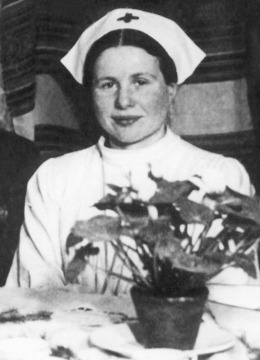
Rosa Louise McCauley Parks (February 4, 1913 – October 24, 2005)
Was an American activist in the civil rights movement best known for her pivotal role in the Montgomery bus boycott. The United States Congress has called her "the first lady of civil rights" and "the mother of the freedom movement"
On December 1, 1955, Rosa Parks boarded a bus in Montgomery, Alabama. Instead of going to the back of the bus, which was designated for African Americans, she sat in the front. When the bus started to fill up with white passengers, the bus driver asked Parks to move. She refused. Her resistance set in motion one of the largest social movements in history, the Montgomery Bus Boycott. Rosa and her husband Raymond Parks were actively fighting to end racial injustice. Together the couple worked with many social justice organizations. Eventually, Rosa was elected secretary of the Montgomery chapter of the National Association for the Advancement of Colored People (NAACP). By the time Parks boarded the bus in 1955, she was an established organizer and leader in the Civil Rights Movement in Alabama. Parks not only showed active resistance by refusing to move she also helped organize and plan the Montgomery Bus Boycott. Many have tried to diminish Parks’ role in the boycott by depicting her as a seamstress who simply did not want to move because she was tired. Parks denied the claim and years later revealed her true motivation:
“People always say that I didn’t give up my seat because I was tired, but that isn’t true. I was not tired physically, or no more tired than I usually was at the end of a working day. I was not old, although some people have an image of me as being old then. I was forty-two. No, the only tired I was, was tired of giving in.”
Parks courageous act and the subsequent Montgomery Bus Boycott led to the integration of public transportation in Montgomery. Her actions were not without consequence. She was jailed for refusing to give up her seat and lost her job for participating in the boycott. After the boycott, Parks and her husband moved to Hampton, Virginia and later permanently settled in Detroit, Michigan. Parks work proved to be invaluable in Detroit’s Civil Rights Movement. She was an active member of several organizations which worked to end inequality in the city. By 1980, after consistently giving to the movement both financially and physically Parks, now widowed, suffered from financial and health troubles. After almost being evicted from her home, local community members and churches came together to support Parks. On October 24th, 2005, at the age of 92, she died of natural causes leaving behind a rich legacy of resistance against racial discrimination and injustice
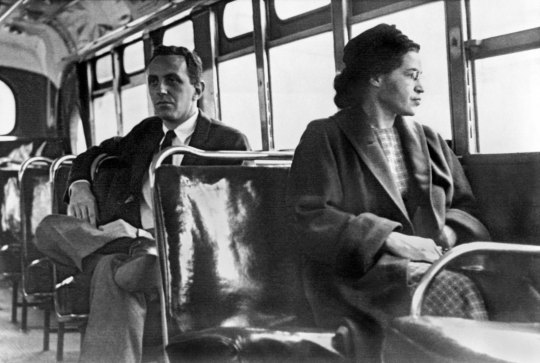
Ruth Bader Ginsburg (March 15, 1933 – September 18, 2020)
Ruth Bader Ginsburg spent a lifetime flourishing in the face of adversity before being appointed a Supreme Court justice, where she successfully fought against gender discrimination and unified the liberal block of the court. She was born Joan Ruth Bader on March 15, 1933 in Brooklyn, New York. Bader taught at Rutgers University Law School and then at Columbia University, where she became its first female tenured professor. She served as the director of the Women’s Rights Project of the American Civil Liberties Union during the 1970s, and was appointed to the U.S. Court of Appeals for the District of Columbia in 1980. Named to the U.S. Supreme Court in 1993 by President Bill Clinton, she continued to argue for gender equality in such cases as United States v. Virginia. She died September 18, 2020 due to complications from metastatic pancreas cancer.
Ruth Bader Ginsburg began her career as a justice where she left off as an advocate, fighting for women’s rights. In 1996, Ginsburg wrote the majority opinion in United States v. Virginia, holding that qualified women could not be denied admission to Virginia Military Institute. Her style in advocating from the bench matches her style from her time at the ACLU: slow but steady, and calculated. Instead of creating sweeping limitations on gender discrimination, she attacked specific areas of discrimination and violations of women’s rights one at a time, so as to send a message to the legislatures on what they can and cannot do. Her attitude is that major social change should not come from the courts, but from Congress and other legislatures. This method allows for social change to remain in Congress’ power while also receiving guidance from the court. Ginsburg does not shy away from giving pointed guidance when she feels the need. She dissented in Ledbetter v. Goodyear Tire & Rubber Co. where the plaintiff, a female worker being paid significantly less than males with her same qualifications, sued under Title VII but was denied relief under a statute of limitations issue. The facts of this case mixed her passion of federal procedure and gender discrimination. She broke with tradition and wrote a highly colloquial version of her dissent to read from the bench. She also called for Congress to undo this improper interpretation of the law in her dissent, and then worked with President Obama to pass the very first piece of legislation he signed, the Lilly Ledbetter Fair Pay Act of 2009, a copy of which hangs proudly in her office.
Until the 2018 term, Ginsburg had not missed a day of oral arguments, not even when she was undergoing chemotherapy for pancreatic cancer, after surgery for colon cancer, or the day after her husband passed away in 2010. Justice Ginsburg proved time and again that she was a force to be reckoned with, and those who doubted her capacity to effectively complete her judicial duties needed only to look at her record in oral arguments, where she was, until her death, among the most avid questioners on the bench. The Supreme Court issued a press release on September 19, 2020, regarding her death
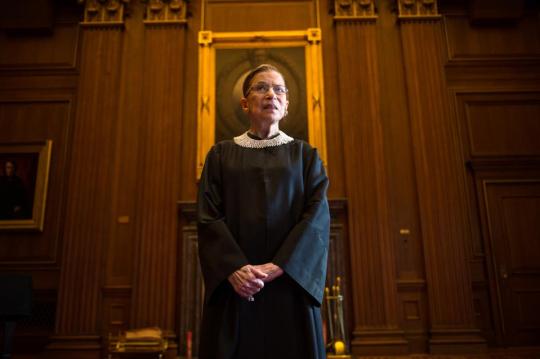
Patricia Bath (November 4, 1942 – May 30, 2019)
Dr. Patricia Era Bath was an American ophthalmologist, inventor, humanitarian, and academic. She was the inventor of laser cataract surgery. Patricia Bath was the first African American to complete a residency in ophthalmology and the first African American female doctor to receive a medical patent. She invented the Laserphaco Probe for cataract treatment in 1986. Also she became the first female faculty member in the Department of Ophthalmology at UCLA's Jules Stein Eye Institute. In 1976, Bath co-founded the American Institute for the Prevention of Blindness, which established that "eyesight is a basic human right." In 1981, Bath began working on her most well-known invention: the Laserphaco Probe (1986). Harnessing laser technology, the device created a less painful and more precise treatment of cataracts. She received a patent for the device in 1988, becoming the first African American female doctor to receive a patent for a medical purpose. She also holds patents in Japan, Canada and Europe. With her Laserphaco Probe, Bath was able to help restore the sight of individuals who had been blind for more than 30 years. In 1993, Bath retired from her position at the UCLA Medical Center and became an honorary member of its medical staff. That same year, she was named a "Howard University Pioneer in Academic Medicine." Her research showed that African-American people are more prone to eye diseases. Among her many roles in the medical field, Bath was a strong advocate of telemedicine, which uses technology to provide medical services in remote areas. For the rest of her natural, Patricia continued to work at the American Institute (which she founded) for the prevention of blindness and was involved in the restoration of vision around the world
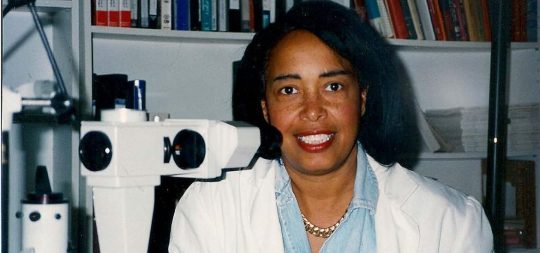
Waris Dirie (born 1965)
Waris Dirie (Somali: Waris Diiriye) is a Somali model, author, actress and human rights activist in the fight against Female Genital Mutilation (FGM). From 1997 to 2003, she was a UN special ambassador against female genital mutilation. In 2002 she founded her own organisation in Vienna, the Desert Flower Foundation.
The successful singer, writer, screenwriter, producer, actress and social activist of Somali origin Waris Dirie revealed her secret to the world: at the age of 3, she was subjected to a cruel rite of female circumcision. She shared her childhood memories with the journalist "Marie Claire" and thus for the first time tried to urge the public against this inhuman act, through which every year in early childhood mutilate (in the worst cases - kill) millions of girls.
Waris Dirie decided to devote her life to fighting an ancient and so widespread custom. She wrote her memoir (co-authored with Cathleen Miller), based on which director Sherry Hormann shot an unusually sensual and emotional motion picture - "Desert Flower" (2009). Waris Dirie became the UN Special Ambassador for Women's Rights and began active political and social international campaigning to ban female circumcision.
Thanks to Waris Dirie's public and charitable activities the governments of countries where the practice of FGM is widespread are beginning to prohibit its implementation (Egypt, Eritrea). Nowadays her foundation collects money to raise awareness about the worldwide problem of FGM and to help those affected. On 11 September 2013, Dirie as patron opened the world's first holistic medical center for the treatment and care of FGM victims in Berlin together with the Waldfriede Hospital as a cooperation hospital of the Desert Flower Foundation. The Desert Flower Cenrer was awarded the Louise Schroeder Medal by the State of Berlin in 2016. In 2014, the Desert Flower Surgical Training Center for surgeons, gynaecologists, urologists and nursing staff was established in Amsterdam together with the Desert Flower Foundation BENELUX. The Desert Flower Center Scandinavia was established in 2015 in cooperation with the Karolinska University Hospital in Stockholm. In 2017 the Centre Fleur du Desert opened with the Fondation Fleur du Desert in the women's shelter at the Hôpital Delafontaine in Paris Saint-Denis.
It’s so hard to imagine what this brave woman had to endure. But her pain became the foundation for creating something very important. She’s a great person who does a lot for our society. She, like a desert flower, is a rare and beautiful phenomenon
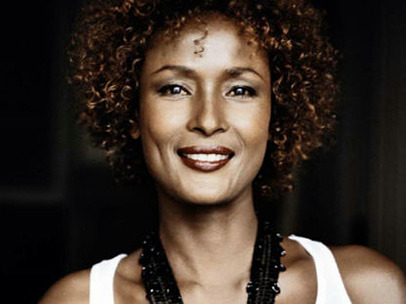
Esther Duflo, FBA (born 25 October 1972)
Is a French–American economist who is a professor of Poverty Alleviation and Development Economics at the Massachusetts Institute of Technology (MIT). She is the co-founder and co-director of the Abdul Latif Jameel Poverty Action Lab (J-PAL), which was established in 2003. She shared the 2019 Nobel Memorial Prize in Economic Sciences with Abhijit Banerjeeand and Michael Kremer, "for their experimental approach to alleviating global poverty".
Esther Duflot became the second woman in history to receive the Nobel Memorial Prize in Economics Sciences. Studying the lives of people in the poorest countries, together with her husband Abhijit Banerjeeand and colleague Michael Kremer, Duflo developed a methodology to assessment the effectiveness of the fight against global poverty through field research, which completely changed the development economics. Duflot approached the study of poverty experimentally and asked specific questions, not general ones. What happens if you give one group of the poor free textbooks and the other better nutrition? What will change? If farmers are given a 50% discount on fertilizer, will they use it? Such field research over 20 years has significantly changed the understanding of poverty. (More about this)
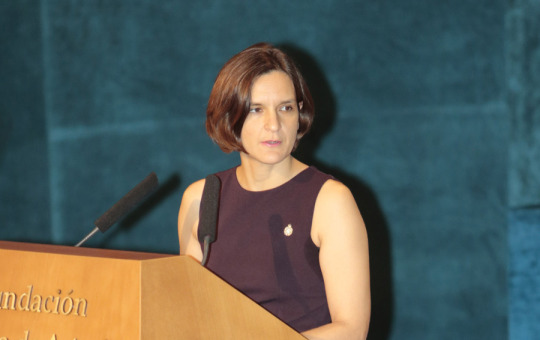
Chimamanda Ngozi Adichie (born September 15, 1977, Enugu, Nigeria)
Nigerian author whose work drew extensively on the Biafran war in Nigeria during the late 1960s.
Early in life Adichie, the fifth of six children, moved with her parents to Nsukka, Nigeria. A voracious reader from a young age, she found Things Fall Apart by novelist and fellow Igbo Chinua Achebe transformative. After studying medicine for a time in Nsukka, in 1997 she left for the United States, where she studied communication and political science at Eastern Connecticut State University (B.A., 2001). Splitting her time between Nigeria and the United States, she received a master’s degree in creative writing from Johns Hopkins University and studied African history at Yale University.
Her work has been translated into over thirty languages and has appeared in various publications, including The New Yorker, Granta, The O. Henry Prize Stories, the Financial Times, and Zoetrope. She is the author of the novels Purple Hibiscus, which won the Commonwealth Writers’ Prize and the Hurston/Wright Legacy Award; Half of a Yellow Sun, which won the Orange Prize and was a National Book Critics Circle Award Finalist and a New York Times Notable Book; and Americanah, which won the National Book Critics Circle Award and was named one of The New York Times Top Ten Best Books of 2013. Ms. Adichie is also the author of the story collection The Thing Around Your Neck.
In 2012, Adichie gave a TEDx talk entitled: "We should all be feminists", delivered at TedXEuston in London, which has been viewed more than five million times. She shared her experiences of being an African feminist, and her views on gender construction and sexuality. Adichie said that the problem with gender is that it shapes who we are. She also said: "I am angry. Gender as it functions today is a grave injustice. We should all be angry. Anger has a long history of bringing about positive change, but in addition to being angry, I'm also hopeful because I believe deeply in the ability of human beings to make and remake themselves for the better."
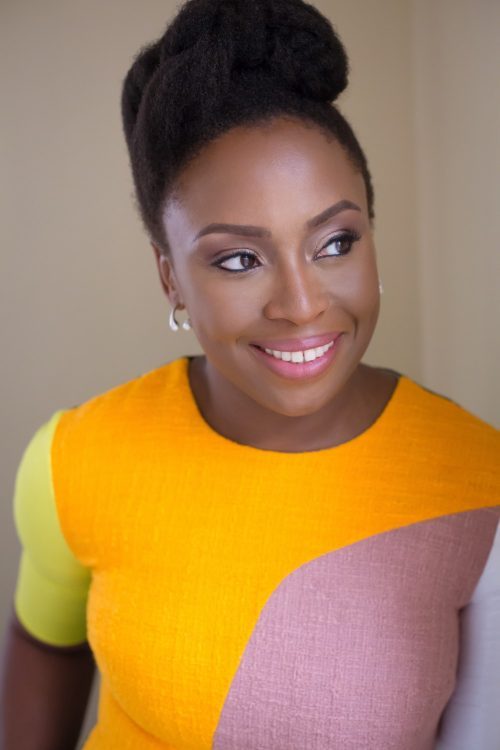
Agnes Chow Ting (born 3 December 1996)
Agnes Chow Ting (Chinese: 周庭) is a Hong Kong politician and social activist. She is a former member of the Standing Committee of Demosistō and former spokesperson of Scholarism. Her candidacy for the 2018 Hong Kong Island by-election, supported by the pro-democracy camp, was blocked by authorities, due to her party's advocacy of self-determination for Hong Kong.
Agnes Chow started fighting for democracy as a teenager and became famous at 18 years old. Supporters call her "the goddess of democracy" and "the real Mulan" (in reference to the legendary Chinese heroine who fought to save her family and country). Ms Chow has been active in Hong Kong politics since a young age, joining a youth-led movement at only 15. The movement had protested against plans to implement "moral and national education" in public schools. Students then feared that it signalled the introduction of the kind of heavily censored education used on the Chinese mainland. They staged huge sit-ins and the plan was eventually shelved. It was during these protests that she met well-known activist Joshua Wong. Both went on to become key figures in the Umbrella movement - a series of sit in protests in 2014 which demanded that the city be able to choose its own leader. The protests were not successful - but created a whole new generation of young political leaders. Ms Chow, Mr Wong and Nathan Law, another activist, went on to found the pro-democracy party Demosisto in 2016. In 2018, Ms Chow tried to run in local elections - she gave up her British citizenship to do so and deferred her university finals. But her nomination was rejected because officials said she supported "self-determination" for Hong Kong. In 2019, massive protests erupted in Hong Kong, with many speaking out against an extradition bill that would allow suspects in Hong Kong to be tried in mainland China. In August of that year, Ms Chow was arrested for allegedly participating in, and inciting, an unauthorised assembly at the Hong Kong police headquarters earlier in June.
On 2 December 2020, Agnes Chow was sentenced to 10 months in jail. A judge in the trial, West Kowloon Magistrate Wong Sze-lai, pronounced accusation: "The defendants called on protesters to besiege the headquarters and chanted slogans that undermine the police force". Amnesty International condemned the sentencing, saying that the Chinese authorities "send a warning to anyone who dares to openly criticise the government that they could be next". She was initially imprisoned at the medium-security Lo Wu Correctional Institution. On 31 December 2020, local media reported that Chow had been transferred to the maximum-security Tai Lam Centre for Women (where she was previously remanded), after she was classified as a Category A prisoner
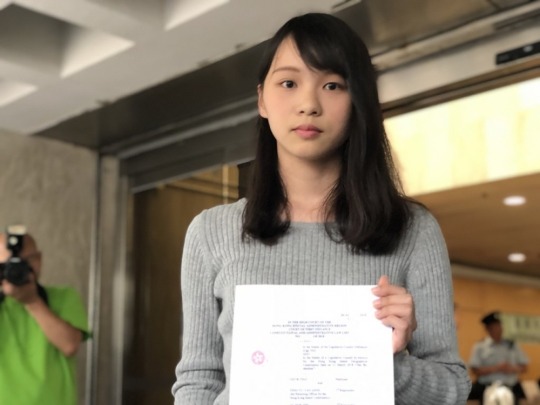
Malala Yousafzai (born 12 July 1997)
Malala Yousafzai, often referred to mononymously as Malala, is a Pakistani activist for female education.
At age eleven, Malala Yousafzai was already advocating for the rights of women and girls. As an outspoken proponent for girls’ right to education, Yousafzai was often in danger because of her beliefs. However, even after being shot by the Taliban, she continued her activism and founded the Malala Fund with her father. By age seventeen, Yousafzai became the youngest person to receive the Nobel Peace Prize for her work.
On October 9, 2012, fifteen-year old Yousafzai was on the bus returning from school with her friends. Two members of the Taliban stopped the bus and asked, “Who is Malala?” When they identified Yousafzai, they shot her in the head. Fortunately, she was airlifted to a Pakistani military hospital and then taken to an intensive care unit in England. After ten days in a medically induced coma, Yousafzai woke up in a hospital in Birmingham, England. She had suffered no major brain damage, but the left side of her face was paralyzed, and she would require many reparative surgeries and rehabilitation. After months of medical treatment, Yousafzai was able to return to her family that now lived in England. In March 2013, Yousafzai began attending school in Birmingham. She published her autobiography entitled, “I Am Malala: The Girl Who Stood Up for Education and Was Shot by the Taliban.” She was awarded the Sakharov Prize for Freedom of Thought by the European Parliament for her activism.
In 2014, Yousafzai and her father established the Malala Fund to internationally support and advocate for women and girls. Through her charity, she met with Syrian refugees in Jordan, young women students in Kenya, and spoke out in Nigeria against the terrorist group Boko Haram that abducted young girls to stop them from going to school. In December of 2014, Yousafzai was awarded the Nobel Peace Prize for her work. At age seventeen, she became the youngest person to be named a Nobel laureate. Since then, Yousafzai has continued to advocate for the rights of women and girls. The Malala Fund advocates for quality education for all girls by funding education projects internationally, partnering with global leaders and local advocates, and pioneering innovative strategies to empower young women. Yousafzai is currently studying Philosophy, Politics and Economics at the University of Oxford.
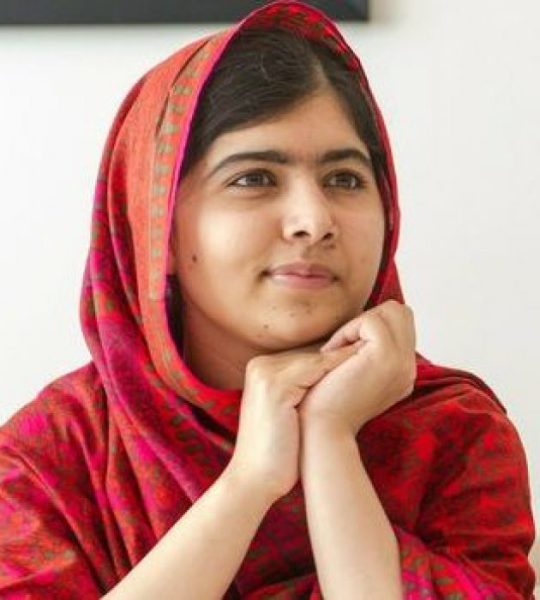
#10 amazing women#happy international women's day#women activists#women of color#international women's day#feminism#millicent fawcett#rosa parks#ruth ginsburg#patricia bath#waris dirie#malala yousafzai#women's day#women's week
5 notes
·
View notes
Text
Elizabeth Garrett Anderson (1836-1917), the first woman to qualify in Britain as a physician and surgeon, is a well-known name in the history of women’s rights. Lesser renowned but still important is her daughter, Louisa Garrett Anderson, who followed Elizabeth into the medical profession and Suffrage campaigns. Whilst her aunt, Millicent Fawcett (1847-1929), belonged to the Suffragist movement, Louisa joined the more militant Suffragettes.
#Me#Louisa Garrett Anderson#Suffragette#Suffragist#Flora Murray#Wspu#Nuwss#Doctor#Ww1#War#World War one
7 notes
·
View notes
Text
Events 2.9
474 – Zeno is crowned as co-emperor of the Byzantine Empire. 1003 – Boleslaus III is restored to authority with armed support from Bolesław I the Brave of Poland. 1098 – The army of the First Crusade under the leadership of Bohemond of Taranto wins a battle against Seljuq emir Ridwan of Aleppo during the siege of Antioch. 1539 – The first recorded race is held on Chester Racecourse, known as the Roodee. 1555 – Bishop of Gloucester John Hooper is burned at the stake. 1621 – Gregory XV becomes Pope, the last Pope elected by acclamation. 1654 – The Capture of Fort Rocher takes place during the Anglo-Spanish War. 1775 – American Revolutionary War: The British Parliament declares Massachusetts in rebellion. 1778 – Rhode Island becomes the fourth US state to ratify the Articles of Confederation. 1788 – The Habsburg Empire joins the Russo-Turkish War in the Russian camp. 1822 – Haiti attacks the newly established Dominican Republic on the other side of the island of Hispaniola. 1825 – After no candidate receives a majority of electoral votes in the US presidential election of 1824, the United States House of Representatives elects John Quincy Adams as sixth President of the United States in a contingent election. 1849 – The new Roman Republic is declared. 1861 – American Civil War: Jefferson Davis is elected the Provisional President of the Confederate States of America by the Provisional Confederate Congress at Montgomery, Alabama 1870 – US president Ulysses S. Grant signs a joint resolution of Congress establishing the U.S. Weather Bureau. 1889 – US president Grover Cleveland signs a bill elevating the United States Department of Agriculture to a Cabinet-level agency. 1893 – Verdi's last opera, Falstaff premieres at La Scala, Milan. 1895 – William G. Morgan creates a game called Mintonette, which soon comes to be referred to as volleyball. 1900 – The Davis Cup competition is established. 1904 – Russo-Japanese War: Battle of Port Arthur concludes. 1907 – The Mud March is the first large procession organised by the National Union of Women's Suffrage Societies (NUWSS). 1913 – A group of meteors is visible across much of the eastern seaboard of the Americas, leading astronomers to conclude the source had been a small, short-lived natural satellite of the Earth. 1920 – Under the terms of the Svalbard Treaty, international diplomacy recognizes Norwegian sovereignty over Arctic archipelago Svalbard, and designates it as demilitarized. 1922 – Brazil becomes a member of the Berne Convention copyright treaty. 1929 – Members of the Việt Nam Quốc Dân Đảng assassinate the labor recruiter Bazin, prompting a crackdown by French colonial authorities. 1932 – Prohibition law is abolished in Finland after a national referendum, where 70% voted for a repeal of the law. 1934 – The Balkan Entente is formed between Greece, Romania, Yugoslavia, and Turkey. 1941 – World War II: Bombing of Genoa: The Cathedral of San Lorenzo in Genoa, Italy, is struck by a bomb which fails to detonate. 1942 – Year-round Daylight saving time (aka War Time) is reinstated in the United States as a wartime measure to help conserve energy resources. 1943 – World War II: Pacific War: Allied authorities declare Guadalcanal secure after Imperial Japan evacuates its remaining forces from the island, ending the Battle of Guadalcanal. 1945 – World War II: Battle of the Atlantic: HMS Venturer sinks U-864 off the coast of Fedje, Norway, in a rare instance of submarine-to-submarine combat. 1945 – World War II: A force of Allied aircraft unsuccessfully attack a German destroyer in Førdefjorden, Norway. 1950 – Second Red Scare: US Senator Joseph McCarthy accuses the United States Department of State of being filled with Communists. 1951 – Korean War: The two-day Geochang massacre begins as a battalion of the 11th Division of the South Korean Army kills 719 unarmed citizens in Geochang, in the South Gyeongsang district of South Korea. 1959 – The R-7 Semyorka, the first intercontinental ballistic missile, becomes operational at Plesetsk, USSR. 1964 – The Beatles make their first appearance on The Ed Sullivan Show, performing before a record-setting audience of 73 million viewers across the United States. 1965 – Vietnam War: The United States Marine Corps sends a MIM-23 Hawk missile battalion to South Vietnam, the first American troops in-country without an official advisory or training mission. 1971 – The 6.5–6.7 Mw Sylmar earthquake hits the Greater Los Angeles Area with a maximum Mercalli intensity of XI (Extreme), killing 64 and injuring 2,000. 1971 – Satchel Paige becomes the first Negro league player to be voted into the USA's Baseball Hall of Fame. 1971 – Apollo program: Apollo 14 returns to Earth after the third manned Moon landing. 1975 – The Soyuz 17 Soviet spacecraft returns to Earth. 1976 – Aeroflot Flight 3739, a Tupolev Tu-104, crashes during takeoff from Irkutsk Airport, killing 24. 1978 – The Budd Company unveils its first SPV-2000 self-propelled railcar in Philadelphia, Pennsylvania. 1982 – Japan Air Lines Flight 350 crashes near Haneda Airport in an attempted pilot mass murder-suicide, killing 24 of the 174 people on board. 1986 – Halley's Comet last appeared in the inner Solar System. 1991 – Dissolution of the Soviet Union: Voters in Lithuania vote for independence from the Soviet Union. 1996 – The Provisional Irish Republican Army declares the end to its 18-month ceasefire and explodes a large bomb in London's Canary Wharf, killing two people. 1996 – Copernicium is discovered, by Sigurd Hofmann, Victor Ninov et al. 2001 – The Ehime Maru and USS Greeneville collision takes place, killing nine of the thirty-five people on board the Japanese fishery high-school training ship Ehime Maru, leaving the USS Greeneville (SSN-772) with US $2 million in repairs, at Pearl Harbor. 2016 – Two passenger trains collide in the German town of Bad Aibling in the state of Bavaria. Twelve people die and 85 others are injured. 2018 – Winter Olympics: Opening ceremony is performed in Pyeongchang County in South Korea. 2020 – Salvadoran President Nayib Bukele has the army soldiers enter the Legislative Assembly to assist in pushing for the approval for a better government security plan, causing a brief political crisis. 2021 – Second impeachment trial of Donald Trump began.[26]
0 notes